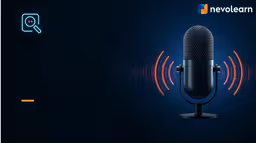Java is one of the most popular programming languages, used for building a wide variety of applications, from web apps to Android software. It is beginner-friendly and offers extensive documentation and community support, making it a fantastic starting point for anyone who wants to learn coding. In this guide, we will dive into simple Java codes for beginners. By the end of this blog, you’ll be able to write your first program, understand basic syntax, and feel confident in practicing Java code.
Why Learn Java?
Java has been around for decades and continues to dominate the programming landscape for several reasons:
1. Platform Independence
Java’s motto is "write once, run anywhere," which means that Java programs can run on any system that has a Java Virtual Machine (JVM).
2. Versatility
Whether you’re creating a desktop application, web-based platform, or mobile app, Java can do it all.
3. Strong Community Support
As one of the most widely-used languages, Java has an enormous base of developers who are always ready to help and share resources.
For beginners, Java offers a robust foundation in object-oriented programming (OOP) concepts, which is essential for building complex software. Let's begin by exploring some basic Java code for beginners.
Setting Up Your Java Environment
Before we get into writing code, you need to set up your development environment. Follow these simple steps:
1. Install JDK
Download and install the Java Development Kit (JDK) from Oracle's official website. The JDK allows you to compile and run Java programs.
2. Choose an IDE
An Integrated Development Environment (IDE) like Eclipse, IntelliJ IDEA, or NetBeans simplifies the coding process by providing features like code completion, debugging, and project management.
Once you have these set up, you are ready to write your first basic Java code for beginners!
Writing Your First Java Program
The first program every beginner learns in Java (or any other programming language) is the "Hello, World!" program. Let’s start by creating this simple program:
public class HelloWorld {
public static void main(String[] args) {
System.out.println("Hello, World!");
}
}
Code Explanation
- public class HelloWorld: Every Java program is defined by a class. Here, HelloWorld is the class name, and it's defined as public, meaning it can be accessed from outside its package.
- public static void main(String[] args): The main method is the entry point of every Java application. The code within the main method runs when you execute the program.
- System.out.println("Hello, World!"): This line prints "Hello, World!" to the console. The println() method is used to output text to the console.
This is a perfect example of a simple Java code for beginners and gives you an idea of how Java programs work.
Java Code Basic Examples for Beginners
Now that you've written your first program, let's explore other basic Java code examples. These examples will help you understand the essential concepts in Java programming.
1. Variables and Data Types
Java supports different data types, including integers, floating-point numbers, characters, and booleans. Here’s an example of how to declare and use variables:
public class DataTypesExample {
public static void main(String[] args) {
int number = 10; // Integer
double price = 19.99; // Floating-point number
char letter = 'A'; // Character
boolean isTrue = true; // Boolean
System.out.println("Number: " + number);
System.out.println("Price: " + price);
System.out.println("Letter: " + letter);
System.out.println("Boolean: " + isTrue);
}
}
Explanation:
- int: This is a data type used for integers.
- double: Represents numbers with decimals.
- char: Represents a single character.
- boolean: Represents true or false values.
These are basic building blocks of Java, and understanding them is essential for any beginner.
2. Conditional Statements
Conditional statements allow you to make decisions in your code. Here’s a simple Java code using an if-else statement:
public class ConditionalExample {
public static void main(String[] args) {
int number = 20;
if (number > 15) {
System.out.println("The number is greater than 15");
} else {
System.out.println("The number is less than or equal to 15");
}
}
}
Explanation:
- The program checks if the number is greater than 15. If true, it prints a message; otherwise, it prints a different message.
This basic Java code for beginners helps you understand how to control the flow of your program.
3. Loops
Loops are used when you need to repeat a block of code multiple times. One common loop is the for loop. Here's a simple loop example:
public class LoopExample {
public static void main(String[] args) {
for (int i = 1; i <= 5; i++) {
System.out.println("Iteration: " + i);
}
}
}
Explanation:
- This loop runs 5 times, printing the current iteration number (i) each time.
Loops are a crucial part of programming as they allow you to automate repetitive tasks.
4. Arrays
An array is a data structure used to store multiple values of the same type. Here’s a simple example:
public class ArrayExample {
public static void main(String[] args) {
int[] numbers = {1, 2, 3, 4, 5};
for (int i = 0; i < numbers.length; i++) {
System.out.println("Number: " + numbers[i]);
}
}
}
Explanation:
- An array numbers holds five integers. The for loop is used to iterate over the array and print each value.
Understanding arrays is essential for managing collections of data in Java.
Object-Oriented Programming (OOP) Basics
Java is an object-oriented language, which means it revolves around objects and classes. Here’s a basic Java code example showcasing OOP principles:
class Car {
String make;
String model;
int year;
public void displayInfo() {
System.out.println("Make: " + make);
System.out.println("Model: " + model);
System.out.println("Year: " + year);
}
}
public class Main {
public static void main(String[] args) {
Car car = new Car();
car.make = "Toyota";
car.model = "Corolla";
car.year = 2020;
car.displayInfo();
}
}
Explanation:
- Class: Car is a class with three attributes: make, model, and year.
- Object: We create an object car from the Car class.
- Methods: displayInfo() is a method that prints the car’s information.
This example introduces you to the world of object-oriented programming in Java, which is fundamental to writing advanced code.
Conclusion
Java is a versatile and powerful language, ideal for beginners who want to learn programming. From writing your first "Hello, World!" program to understanding variables, loops, and object-oriented principles, this guide covers key basic Java code examples. These simple Java codes for beginners provide a strong foundation for building more complex applications as you continue to learn and practice.
With these concepts and examples, you are well on your way to mastering Java programming. As you move forward, remember that practice is key. The more you code, the more familiar you will become with Java syntax and problem-solving strategies. Keep exploring, experimenting, and coding—soon, you’ll be developing full-fledged applications in Java!
Want to Level Up Your Skills?
EXPLORE BY CATEGORY
End Of List
No Blogs available Agile
Frequently Asked Questions
- To start writing Java code, beginners need to:
- Install the Java Development Kit (JDK): This provides the necessary tools to compile and run Java programs.
- Choose an Integrated Development Environment (IDE): Popular options include Eclipse, IntelliJ IDEA, and NetBeans, which offer features like code completion and debugging tools.
- Set Up Environment Variables: Configure system paths to recognize Java commands.
- Familiarize with Basic Syntax: Understanding Java’s syntax is crucial for writing effective code.
- The first program every Java beginner typically writes is the "Hello, World!" program. This simple program helps learners understand the basic structure of a Java application, including class declaration, the main method, and how to output text to the console.
- public class HelloWorld {
- public static void main(String[] args) {
- System.out.println("Hello, World!");
- }
- }
- Conditional statements in Java allow the program to make decisions based on certain conditions. The most common conditional statements are if, else if, and else. They are used to execute different blocks of code depending on whether a condition is true or false.
- int number = 20;
- if (number > 15) {
- System.out.println("The number is greater than 15");
- } else {
- System.out.println("The number is less than or equal to 15");
- }
- Loops in Java are control structures that allow repetitive execution of a block of code as long as a specified condition is true. They are essential for performing tasks like iterating through arrays, processing user input, and automating repetitive actions. Common types of loops include for, while, and do-while loops.
- for (int i = 1; i <= 5; i++) {
- System.out.println("Iteration: " + i);
- }
- Arrays in Java are used to store multiple values of the same data type in a single variable. They provide a way to organize data efficiently and access elements using indices. Beginners should understand how to declare, initialize, and iterate through arrays.
- int[] numbers = {1, 2, 3, 4, 5};
- for (int i = 0; i < numbers.length; i++) {
- System.out.println("Number: " + numbers[i]);
- }
- Object-Oriented Programming (OOP) is a programming paradigm based on the concept of objects, which can contain data and methods. In Java, OOP is fundamental as it promotes code reusability, scalability, and maintainability. Key OOP principles include encapsulation, inheritance, polymorphism, and abstraction.
- class Car {
- String make;
- String model;
- int year;
- public void displayInfo() {
- System.out.println("Make: " + make);
- System.out.println("Model: " + model);
- System.out.println("Year: " + year);
- }
- }
- public class Main {
- public static void main(String[] args) {
- Car car = new Car();
- car.make = "Toyota";
- car.model = "Corolla";
- car.year = 2020;
- car.displayInfo();
- }
- }
- Common errors include:
- Syntax Errors: Missing semicolons, braces, or incorrect spelling. To avoid this, carefully check your code and use an IDE with syntax highlighting.
- Runtime Errors: Issues like division by zero or null pointer exceptions. Use proper error handling and validate inputs.
- Logical Errors: Code runs but doesn’t produce the expected outcome. Debug by tracing your code and using print statements to check variable values.
- Type Mismatch Errors: Assigning incompatible data types. Ensure that variables are correctly typed and cast when necessary.
- Recommended resources include:
- Official Documentation: Oracle’s Java Documentation provides comprehensive information.
- Online Tutorials: Websites like Codecademy, Coursera, and Udemy offer structured Java courses.
- Books: "Head First Java" by Kathy Sierra and Bert Bates is highly recommended for beginners.
- Practice Platforms: Websites like LeetCode, HackerRank, and Codewars allow you to practice Java coding problems.
- Community Forums: Participate in forums like Stack Overflow and Reddit’s r/learn java for support and guidance.




